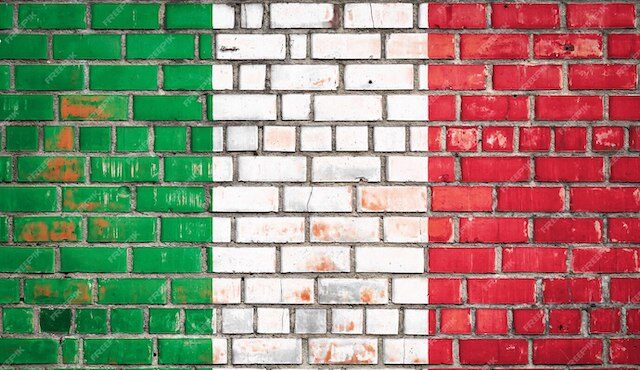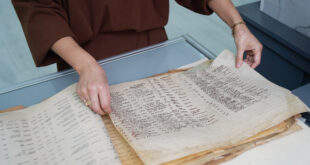Most genealogists are familiar with the term “brick wall.” We use it to describe a situation where we think we have tried every possibility to find some piece of information but have come up empty.
Sometimes, the information exists but it’s not on the internet. You might have to go to some courthouse in South Carolina, or write to them, to get a copy or an extract of somebody’s birth record.
Sometimes, the information is on the internet but you have to either pay a subscription fee, or go to a public library or FamilySearch center to use their web access to get the information you need.
Sometimes you know the birth date and the town and when you go to the FamilySearch film/folder for that town and that year, the pages are missing. April births are there and so are May birth and June, then no July or August, then September births …
Sometimes you have a death certificate in Italy that says the town the person was born in, and their age, and when you check the births of that town, the person just is not there.
And sometimes, every known document is vague about someone’s birthplace. The census, the Cook County death certificate, the World War I draft card, all just say “Italy” and there seems to be no other document to look for that might have the town listed.
Once you are working with Italian civil records, they are quite accurate and complete. It gives us a false sense of security regarding the stateside availability of information.
So let’s go through these various brick wall scenarios and see what you can try, in order to get around the problem.
- The item you need is not on the internet. This will be especially true for people researching the northern regions of Italy with fewer available records on FamilySearch. You can try to find the address of the Ufficio dello Stato Civile for the town, and write them a request, in Italian, for a copy of the record you need. Do not send money with your request. Ask for the amount in the letter. Provide an e-mail address so they can contact you with the cost for the record, or to e-mail you the copy of the record directly.
- The item you need is on a pay site that costs too much. Obviously we are not talking about FamilySearch, which is free. But if you need something from Fold3, Ancestry, and many other sites, your best bet is to visit a public library, FamilySearch Center, or FamilySearch Affiliate Library. I would never suggest for you to talk to a friend who subscribes to these sites. Never….
- The item you need is supposed to be on FamilySearch but that item is physically missing from the folder/film. Oh I have had this happen more times that I care to recall. Some of these books are 200 years old and have been damaged by bookworms. Some have had pages taken from them by vandals (hopefully not by other genealogists!) Sometimes the camera person who filmed these records just missed a page or several. Sometimes the year you are looking for has a problem and has been blocked from viewing on FamilySearch. My first suggestion is to look for Allegati records for the year this person got married. The allegati may have copies of the birth record of a bride or groom that was missing from the births at the time they were microfilmed, but was not missing when the person got married decades earlier. So you might find the record extracted in the allegati when the other copy in the births is gone forever.
- The item you need is a birth that is over 100 years old but is still restricted by privacy laws. My Bari birth films 1921 and later are all unavailable on FamilySearch because at the time they set up the legal agreements, it was less than 100 years ago. Now it is over 100 years but the catalog still has not released these records for viewing. You can try contacting FamilySearch and asking them to review the policy and release the 1921-1923 births. You can also write to the Ufficio dello Stato Civile (see above) and ask for an extract.
- A different source says they were born in this town, and when I check, they aren’t in the records. So the records are not missing or restricted, and yet the person known to have been born there cannot be found in the birth records. Yes I’ve been down this road too. Check 5 years before, five years after, and nobody with that surname is in the index. Also, again, I would suggest that you try the allegati. Also, perhaps at the time of someone’s death, the town name is “Adelfia” but when they were born, it was known as “Montrone” or “Canneto.” So you might need to find out other town names, or the names of the closest nearby towns. Sometimes, the clerk who wrote the original record had a serious brain cramp (and I have those all the time!!) They just write the information incorrectly or in the wrong place on the form. This happens once in a while and you have to be creative where you look. I have had to find out the towns where the surname is more common by looking in the nearest towns, in the index. If I am looking for Ruscigno in Triggiano and he’s not there, I check many other towns in the province of Bari and I find that the town of Sannicandro di Bari is loaded with Ruscignos. Think outside the box.
- Every American document just says “Italy” and none of them tell me the name of the town. Obvious suggestions include finding naturalization petition or declaration papers. These always have the birth town on them, even if it is spelled wrong sometimes. Another obvious possibility is the passenger list. If they cam to the US after 1906, you should have a column for the birthplace. Yes you may have other people with the same name as your ancestor, but you can use the age, connected relatives and the city they went to, as a way of narrowing down the right person and therefore, the right town.
There are other types of brick walls, but if you haven’t been through most if not all of these six, believe me, the fun is just beginning!!
 Fra Noi Embrace Your Inner Italian
Fra Noi Embrace Your Inner Italian







